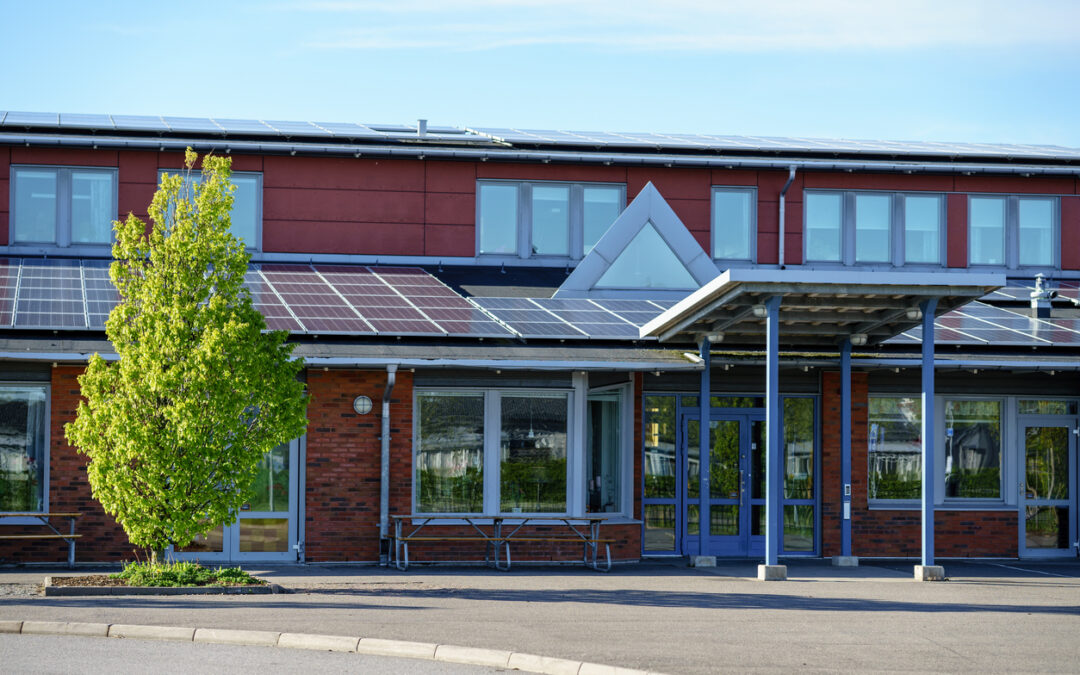The adoption of solar energy systems in schools is becoming increasingly popular as educational institutions seek to reduce costs, promote sustainability, and provide hands-on learning opportunities for students. Installing solar panels in schools not only helps to achieve significant cost reductions but also supports environmental stewardship and educational enrichment. This blog explores the numerous benefits of solar energy systems for schools, with a focus on solar panel installation in Minnesota schools.
Cost Reduction
One of the most compelling reasons for schools to invest in solar energy is the significant cost reduction associated with lower electricity bills. Schools are large energy consumers, and the savings from reduced utility costs can be substantial. According to a report by the Solar Energy Industries Association (SEIA), schools can save an average of $1,000,000 over 30 years by installing solar panels. These savings can be redirected towards educational programs, resources, and infrastructure improvements.
In Minnesota, where schools face high energy costs, the financial benefits of solar panels are particularly notable. By harnessing solar power, schools can stabilize their energy expenses, protect against rising utility rates, and improve their overall financial health. This cost efficiency allows schools to allocate more funds to educational needs rather than operational expenses.
Sustainable Energy Solution
Adopting solar energy systems in schools aligns with broader sustainability goals and demonstrates a commitment to environmental stewardship. Solar panels provide a clean, renewable energy source that significantly reduces greenhouse gas emissions and dependence on fossil fuels. This transition to sustainable energy solutions helps mitigate climate change and promote a healthier environment for current and future generations.
For Minnesota schools, integrating solar panels supports the state’s renewable energy targets and sustainability initiatives. By contributing to a reduction in carbon footprint, schools can play a pivotal role in fostering a culture of environmental responsibility within their communities.
Educational Opportunities
The benefits of solar panels for schools extend beyond financial and environmental impacts; they also offer valuable educational opportunities. Solar energy systems can serve as practical, hands-on learning tools for students, providing real-world applications of science, technology, engineering, and mathematics (STEM) concepts. Schools can incorporate solar energy topics into their curricula, offering students a deeper understanding of renewable energy technologies and sustainability practices.
Moreover, having a working solar energy system on campus allows students to engage in data analysis and monitoring, enhancing their analytical and critical thinking skills. This experiential learning approach can inspire students to pursue careers in renewable energy and environmental sciences, contributing to a more knowledgeable and eco-conscious future workforce.
Community Engagement and Leadership
Schools that invest in solar energy can position themselves as leaders in community sustainability efforts. By demonstrating the benefits of solar power, schools can influence local businesses, residents, and other institutions to consider renewable energy solutions. This leadership fosters a sense of community pride and encourages collective action towards environmental sustainability.
In Minnesota, where community values and environmental conservation are deeply ingrained, schools that adopt solar energy systems can strengthen their connection with local stakeholders and garner support for broader sustainability initiatives. This community engagement further amplifies the positive impact of solar energy adoption.
Long-Term Investment
Solar panel installation in schools is a long-term investment that continues to deliver benefits well into the future. Modern solar panels have a lifespan of 25 to 30 years, with many systems producing energy efficiently for even longer. This longevity ensures that the initial investment in solar energy yields ongoing financial and environmental returns.
Additionally, the presence of solar panels can increase the value of school properties and enhance their appeal to prospective students and parents. Schools known for their commitment to sustainability and innovation are often more attractive to families seeking quality education in a forward-thinking environment.
Financial Incentives and Support
Schools in Minnesota can take advantage of various financial incentives and support programs to offset the cost of solar panel installations. The federal Investment Tax Credit (ITC) allows for a substantial deduction from the cost of solar energy systems, and state-specific incentives, such as the Minnesota Solar Energy Incentive Program (SEIP), provide additional rebates and grants.
Furthermore, schools can explore financing options such as Power Purchase Agreements (PPAs) and grants from organizations dedicated to promoting renewable energy in educational institutions. These financial mechanisms make it more feasible for schools to adopt solar energy and realize its long-term benefits.
Enhanced Energy Resilience
Solar energy systems enhance the energy resilience of schools by providing a reliable and independent power source. In the event of power outages or grid disruptions, solar panels paired with energy storage solutions can ensure that critical school operations continue uninterrupted. This energy security is particularly important in regions prone to extreme weather events or other disruptions.
For Minnesota schools, which can experience harsh winter conditions, having a resilient energy system that includes solar panels and battery storage can significantly improve operational stability and safety.
Embracing Solar Energy for a Sustainable Future
The benefits of solar energy systems for schools are manifold, including significant cost reductions, enhanced sustainability, valuable educational opportunities, and strengthened community engagement. For schools in Minnesota, the adoption of solar panels aligns with the state’s renewable energy goals and provides a robust framework for long-term financial and environmental benefits.
By investing in solar panel installation, schools can reduce their energy costs, contribute to a cleaner environment, and offer students a rich educational experience that prepares them for the future. As a leading provider of solar energy solutions, Cedar Creek Energy is committed to helping schools in Minnesota harness the power of solar energy to create a more sustainable and financially secure future. Contact us today to learn more about how solar panels can benefit your school.

